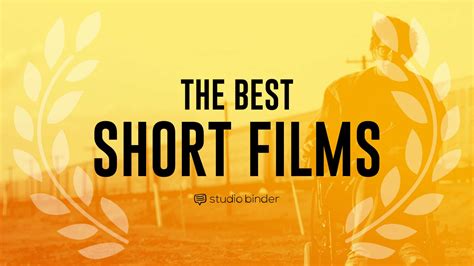Introduction
Short films have gained immense popularity due to their ability to convey powerful stories within a limited runtime. With the rise of streaming platforms and social media, filmmakers are increasingly exploring innovative short film styles to engage and entertain audiences.

Top Short Film Styles
1. Narrative
Narrative short films tell a complete story with a beginning, middle, and end. They typically feature characters, conflict, and resolution. Narrative shorts can be comedic, dramatic, or experimental.
2. Documentary
Documentary shorts explore real-world issues or events through interviews, archival footage, and narration. They aim to inform, educate, and raise awareness about important topics.
3. Experimental
Experimental short films push the boundaries of traditional filmmaking. They often employ unconventional techniques, abstract imagery, and non-linear narratives. Experimental shorts are designed to challenge audiences and evoke new perspectives.
4. Animation
Animated short films use animated characters and visuals to tell stories. They can be created using traditional hand-drawn techniques or modern computer-generated imagery (CGI). Animation allows filmmakers to create surreal worlds and explore imaginative concepts.
5. Hybrid
Hybrid short films combine elements from multiple styles. They may incorporate narrative, documentary, experimental, and animated elements to create unique and impactful viewing experiences.
Short Film Lengths
The optimal length for a short film depends on its style and content. However, most short films fall within the following ranges:
| Length Range | Definition |
|---|---|
| Under 5 minutes | Ultra-short film |
| 5-15 minutes | Short film |
| 15-30 minutes | Medium-length film |
| 30-60 minutes | Long-length film (rare for short films) |
Benefits of Short Films
Short films offer numerous benefits for filmmakers and audiences alike:
- Accessibility: Short films can be easily distributed and viewed on multiple platforms, making them accessible to a wide audience.
- Cost-effective: Producing a short film is typically less expensive than a feature-length film, allowing filmmakers to experiment with different styles and concepts.
- Time-efficient: Short films can be produced and viewed in a relatively short amount of time, making them a great option for busy audiences.
- Emotional Impact: Despite their brevity, short films can evoke powerful emotions and leave a lasting impression on viewers.
Common Mistakes to Avoid
- Overstuffing the Story: Trying to cram too much content into a short film can make it feel rushed and overwhelming.
- Lack of Focus: Short films should have a clear focus and avoid rambling or unnecessary subplots.
- Inconsistent Tone: Maintaining a consistent tone throughout the film is essential to engage audiences.
- Poor Pacing: The pacing of a short film should keep viewers engaged and prevent the film from dragging.
- Ignoring Audience Feedback: Seeking feedback from test audiences can help filmmakers identify weaknesses and improve their short films.
Industry Statistics
- According to the Academy of Motion Picture Arts and Sciences, short films comprise approximately 20% of all film submissions to major festivals.
- A study by Film Independent found that short films have a success rate of 30% in securing funding for feature-length projects.
- The International Short Film Festival Oberhausen screens over 500 short films annually, showcasing the diversity and innovation of this art form.
FAQs
1. How long should my short film be?
The optimal length depends on the film’s style and content, but most short films range from 5 to 15 minutes.
2. How can I find funding for my short film?
Funding sources for short films include grants, crowdfunding, and private investors.
3. Where can I distribute my short film?
Short films can be distributed through online platforms such as Vimeo, YouTube, and FilmFreeway, as well as through film festivals.
4. How do I promote my short film?
Promoting a short film involves creating a website, social media presence, and engaging with audiences through screenings and online discussions.
5. What are the career opportunities for short filmmakers?
Short filmmakers can pursue careers in feature-length filmmaking, television, advertising, and other media industries.
6. What resources are available for aspiring short filmmakers?
Numerous organizations and websites provide resources and support for aspiring short filmmakers, including the Academy of Motion Picture Arts and Sciences, Film Independent, and the International Short Film Festival Oberhausen.
